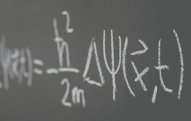Coalition politics- Let's do the math
Einstein said it best, "Politics is for the present but an equation is for eternity".
Can eternal math equations be used to define politics? Or better still, would politicians benefit from quantum mechanics!?
As bizarre as it may sound, new research published last month by mathematician Dr. Fabio Bagarello, from University of Palermo in Italy predicts election outcomes based on coalition governments using principles from classical mechanics!
When asked about the motivation behind this study Dr. Bagarello states, "The 2013 political elections in Italy created a lot of confusion because of the unexpected impasse that did not allow any stable coalition for quite a long period. Also, many electors were disappointed with the choices made by "their" parties. So I started wondering if some model could be constructed to model these parties".
Surely, we all would have heard of mathematical models to study climate science, biology, physics, astronomy etc. but politics?
As a result it makes the current study a rarity.
To conduct his study, Dr. Bagarello made use of concepts from what is referred to as Hamiltonian Mechanics, a branch of classical mechanics.
In mathematics, Hamilton operator contains the equation that describes the properties associated with a particle found in physical systems, such as planets to electrons. In addition, using these properties, the Hamilton operator also illustrates how the system evolves over time.
In the current model, the 'system' under study is the political party. Dr. Bagarello's model consists of three political parties.
Now each party has a couple of choices, either to form a coalition or not.
As a result, this creates a total of eight combinations of alliances between the parties that evolve over time.
The main goal of the model was to infer the time behavior of what are referred to as the "decision functions" that describes the possibility of a coalition.
The beauty of the model lies in the fact that, it suggests a possible way for these parties, to 'decide' whether or not they should form a coalition based on different interactions.
Dr. Bagarello reports, "The decision is taken, considering three different kind of interactions: those among the parties, those between the parties and their electors and those between the parties and the undecided voters".
Interestingly, it turns out that the model predicts the last two interactions as being very crucial to reach a final decision. This point highlights the importance of democracy.
Dr. Bagarello points out, "Interactions between parties only are not sufficient to produce any final decision."
Although this is a very creative way to look at election outcomes, Dr. Bagarello warns that they are only partially realistic and there are a lot of unanswered questions.
"Well, once we understand that the first party should try to form some alliance, should it ally with the second or with the third party?" would be a natural extension of the current problem that he would look into, says Dr. Bagarello.
After Nate Silver's nearly accurate prediction of the 2008 presidential elections of the United States, using statistics, is it really any wonder that mathematics could power governance via stable coalitions?
Probably not, and that proves the versatility of mathematical models yet again!
Image credit: www.hppinc.org



































